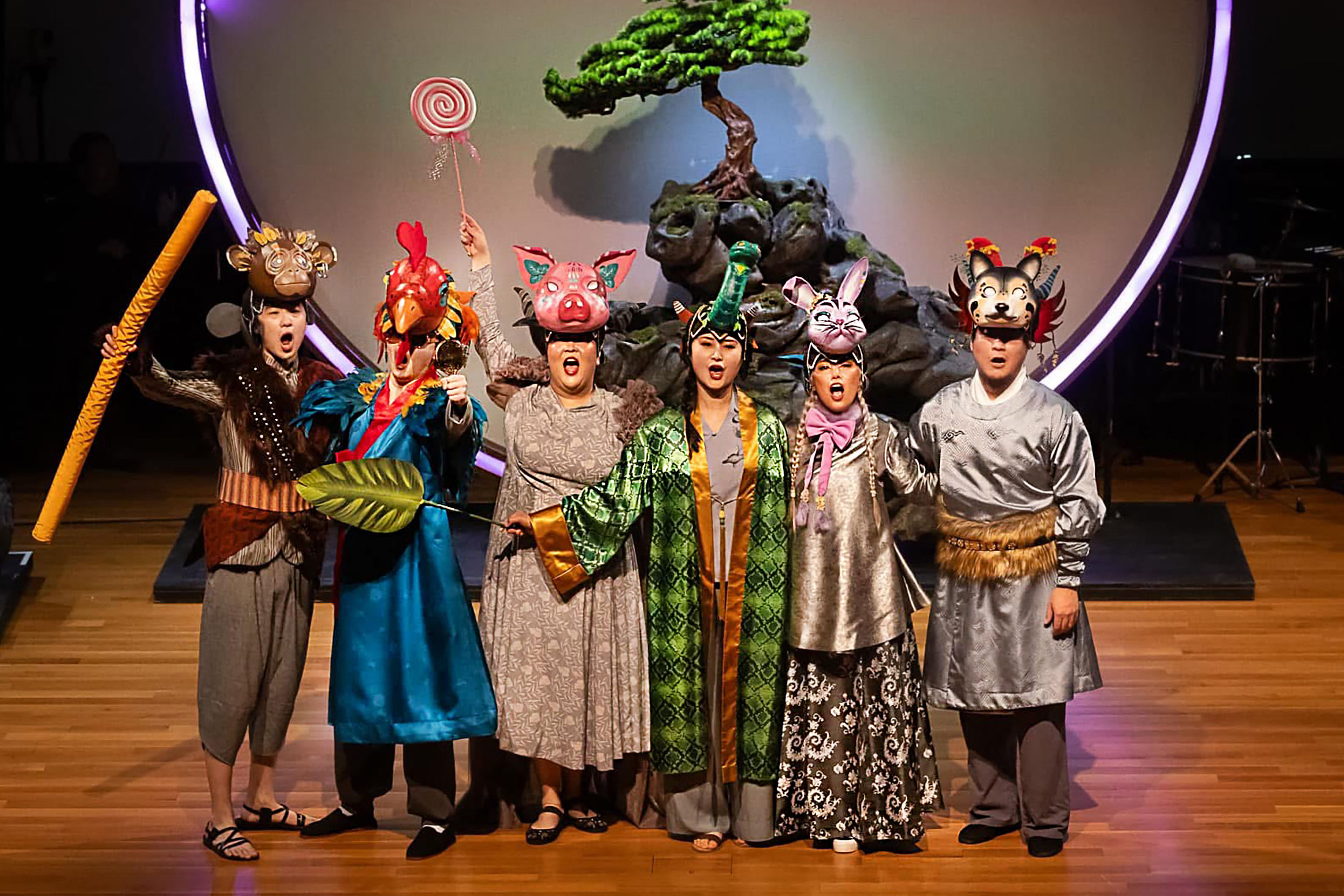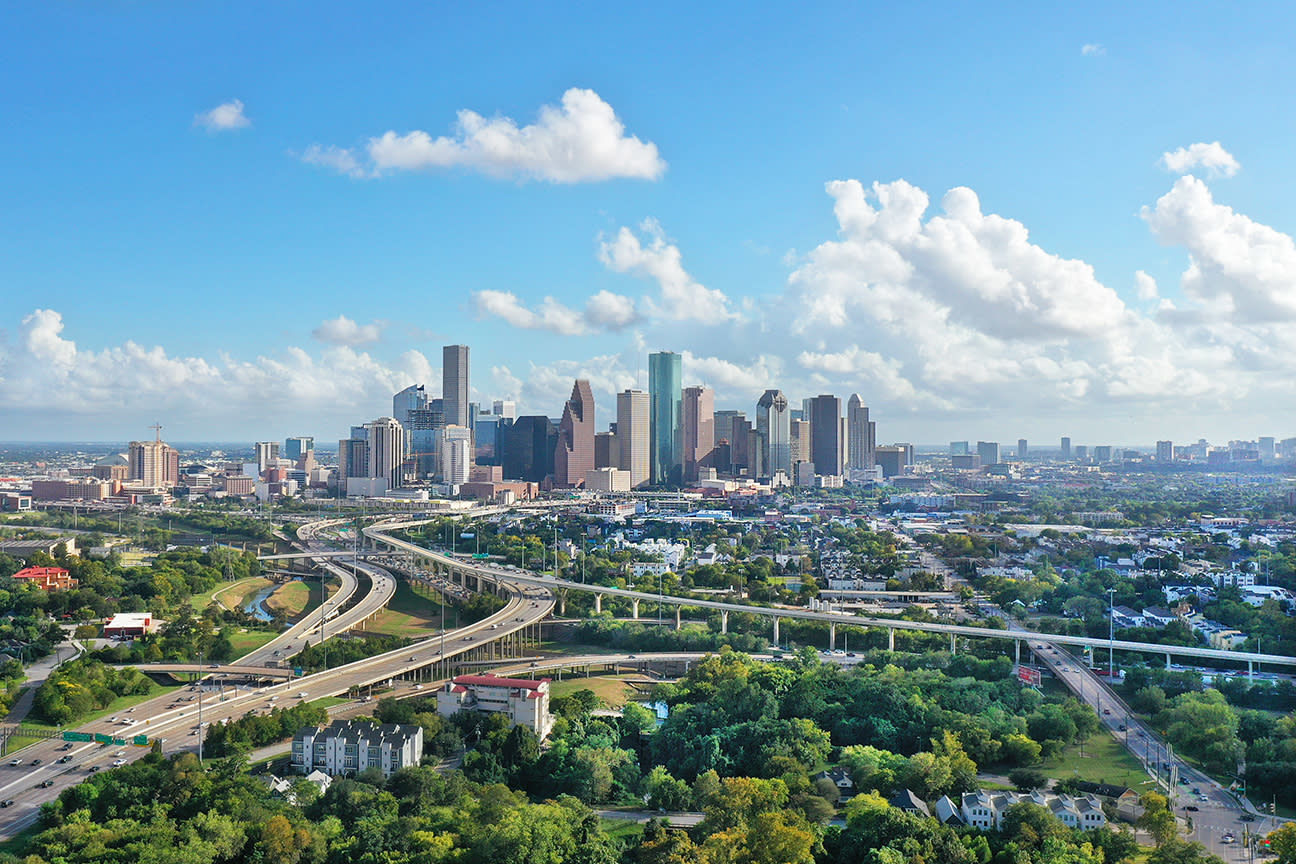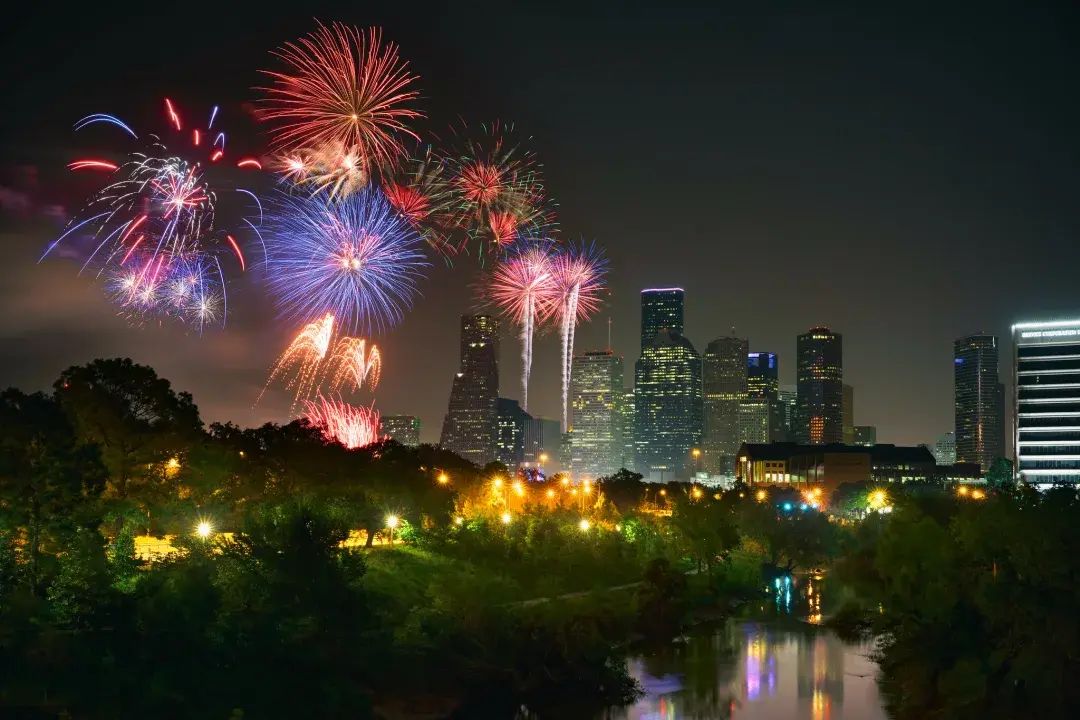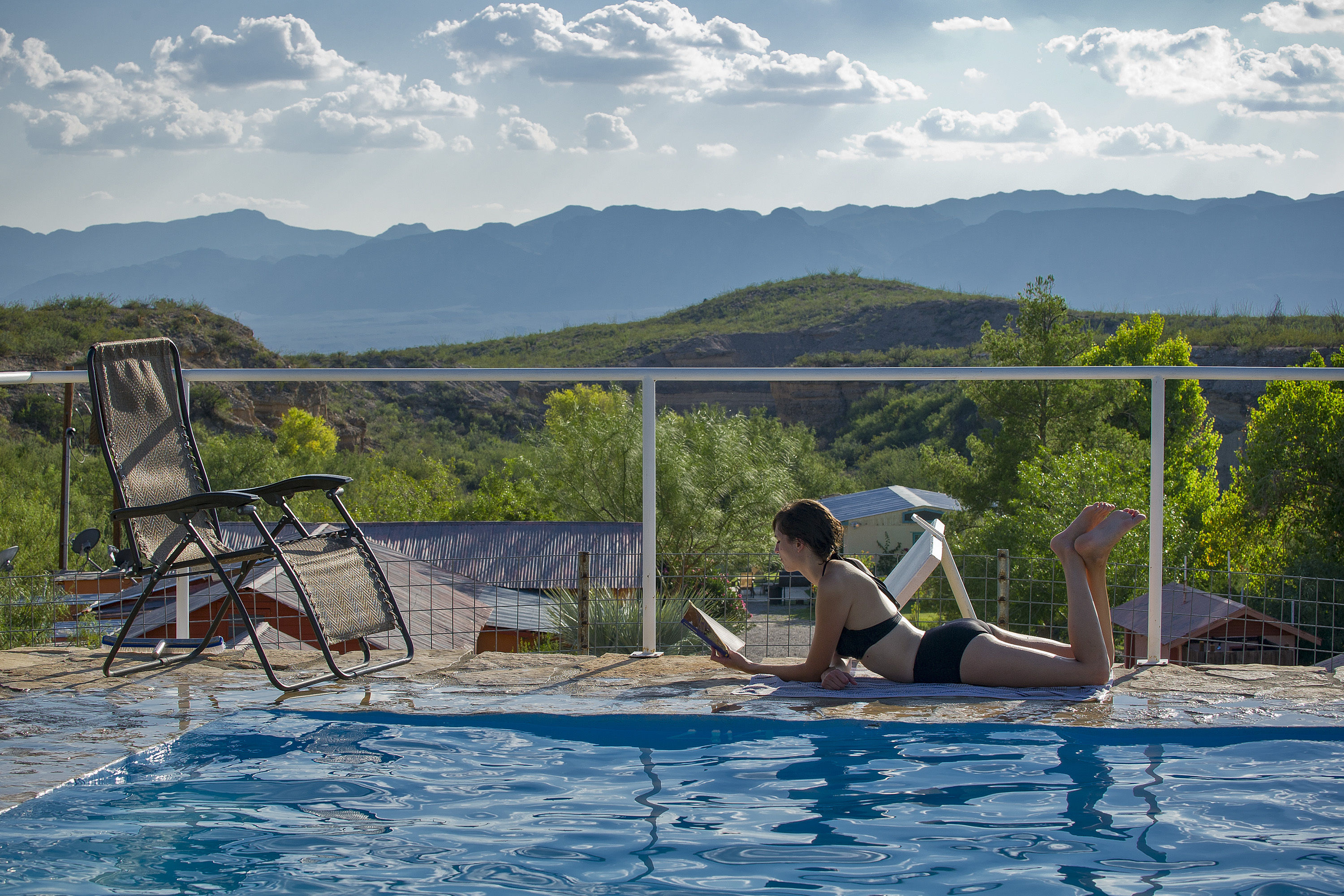
20 Texas Swimming Holes to Cool You Off This Summer
Feature image of Chinati Hot Springs: Chase Fountain/TPWL
We don’t know about you, but when the summer heat sets in, we get a hankering to explore the back roads of the Lone Star State, searching for sweet, sweet relief from the relentless Texas sun. Right about now nothing but a dunk in a chilly body of water will do, and, lucky for us, Texas is overflowing with incredible swimming holes. These 20 spots are our very favorites—cool, clear, refreshing lakes, rivers, and spring-fed pools that are just the thing to get us through the sweltering days ahead.
Fresh for August 2020, we’ve updated our list to reflect any temporary closures or restrictions among these swimming holes due to COVID-19, along with any changes or closures among the restaurants and accommodations. Happy swimming!
Jacob's Well
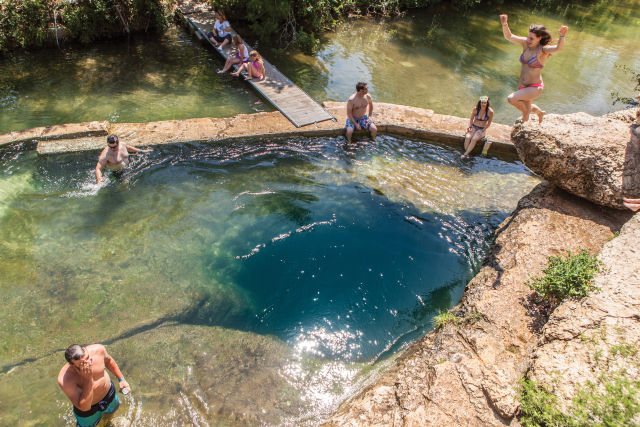
Image: © Kenny Braun
reservations Required to swim; booked through mid-September. Plunging into the enchanting, fathomless waters of Jacob’s Well—the opening of Wimberley’s underground Trinity Aquifer, which flows into Cypress Creek—is a little scary. “When you’re standing at the rocks and looking down, it can be intimidating,” says Katherine Sturdivant, park specialist at the Hays County Parks Department. But encouragement from others, whether they’re wading in the nearby creek or awaiting their own turn to jump in, usually motivates visitors to the 81-acre preserve to leap from the limestone cliffs into the eternally 68-degree turquoise waters of the mystifying cavern below. That cavern, by the way, runs more than 140 feet deep—only the pros are allowed to dive down and explore it. “You don’t find that many caverns in Central Texas,” Sturdivant says. “To have this type of geological feature that is accessible to the public is very unique.”
- Time of year: May 1-Sept. 30
- Reservations: Required
- Entrance fee: $5-9; children under 4, free
- Yes: Restrooms, parking
- No: Camping, alcohol, dogs, fishing, boating, kayaking
Stay
Book a cabin for the whole family at Wimberley’s 7A Ranch (from $259/night), or, for a romantic getaway, one of the well-appointed studios at Hotel Flora and Fauna (from $119/night).
Eat
The Leaning Pear offers pizza, salads, and comfort-food classics in an oh-so-Hill Country setting, while Ino’z Brew and Chew serves up sandwiches, nachos, and cocktails at its riverside beer garden.
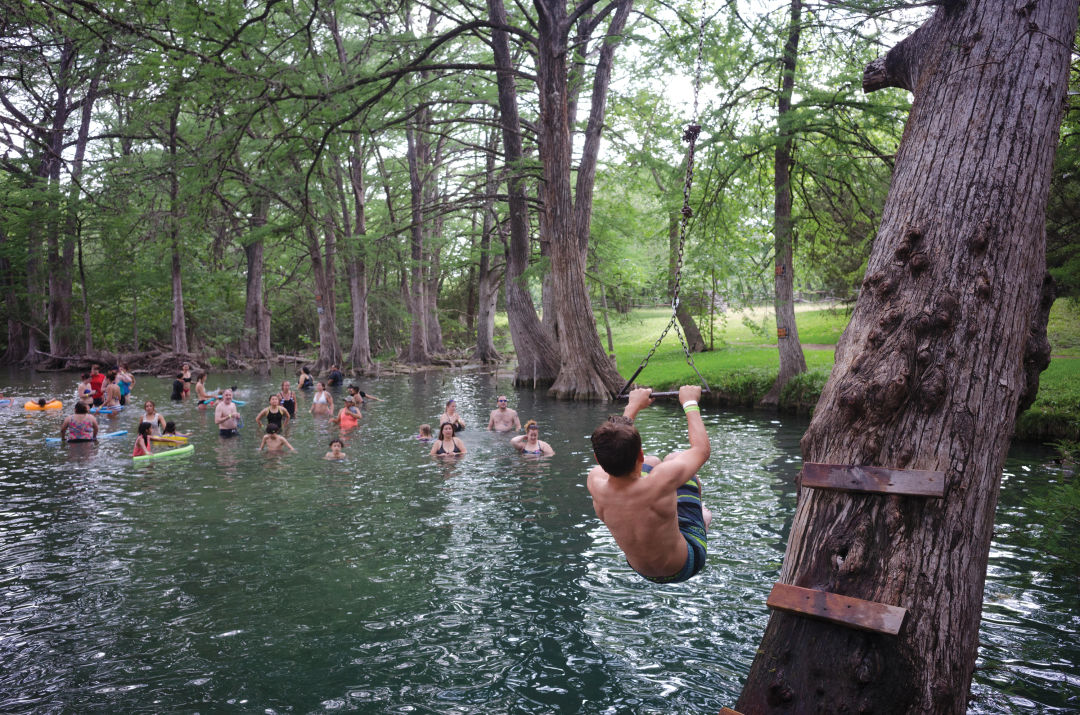
Also in Wimberley
Reservations currently required to swim. Blue Hole Regional Park is a larger-scale operation, also on Cypress Creek, that offers a three-acre swim area where visitors swing into its crystal-clear waters—though you’ll still need a pre-paid reservation to take a dip.
Situated between two dams in the creek, Cypress Falls Swimming Hole, next to the town’s Lodge at Cypress Falls, is great for floating, canoeing, and kayaking—get a day pass through the lodge or stay the night.
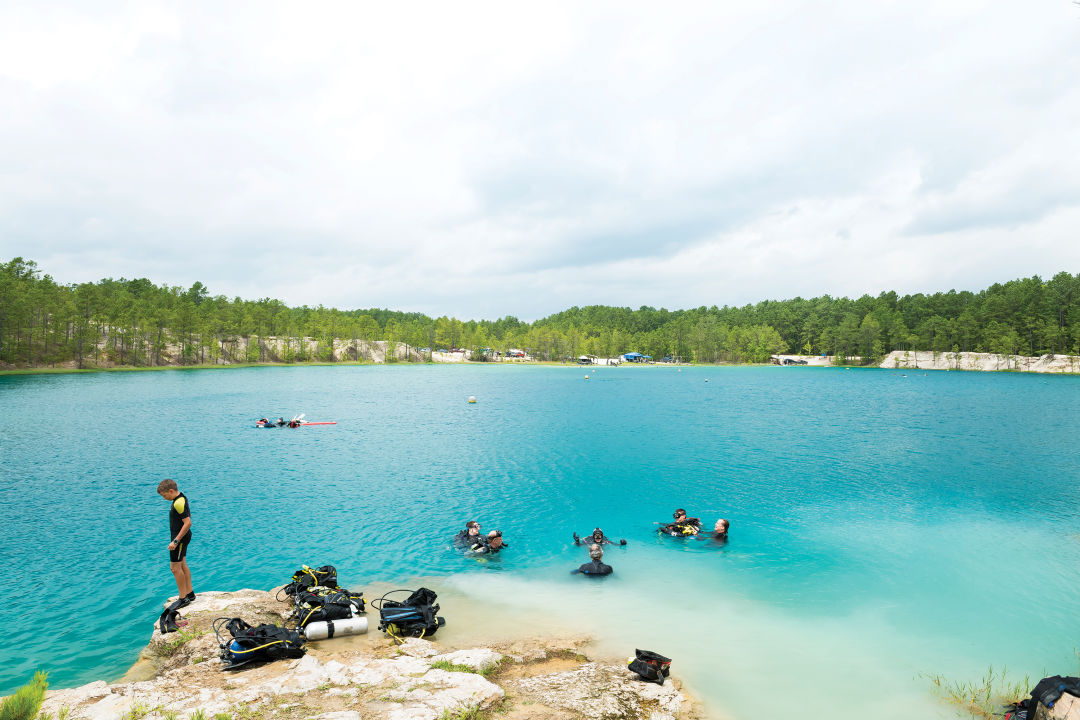
Image: Anthony Rathbun
Blue Lagoon
Blue Lagoon, a swimming hole north of Huntsville located off a long, uneven ranch road, looks like—well—a Caribbean resort. “The water’s bright blue, cold, and kind of a hidden secret,” says Stefan Salazar, who lives in The Woodlands and has been making frequent trips here since he was a boy. The reclaimed limestone quarry is primarily a scuba-training site—there are even sunken boats and planes for divers to explore—but casual visitors are welcome on a space-available basis (get there early). The secret to that azure beauty? The lagoon curiously has little natural flora or fauna, making it not only the swimming hole closest to Houston but probably the least intimidating. “It’s the one place in Texas that I know doesn’t have anything in the water that can kill me,” jokes Salazar.
- Time of year: Year-round
- Reservations: Scuba clients only
- Entrance fee: $25; children under 10, $7
- Yes: Restrooms, camping (for scuba clients only), alcohol, parking
- No: Dogs, fishing, boating, kayaking
Stay
Nearby New Waverly is home to the Gibbs Street Manor (from $150/night), where charming Colonial accommodations are supplemented by an on-site spa.
Eat
Stop at Huntsville’s Carbonero for Latin American specialties like pupusas, ropa vieja, and the best fried plantains we’ve ever had.
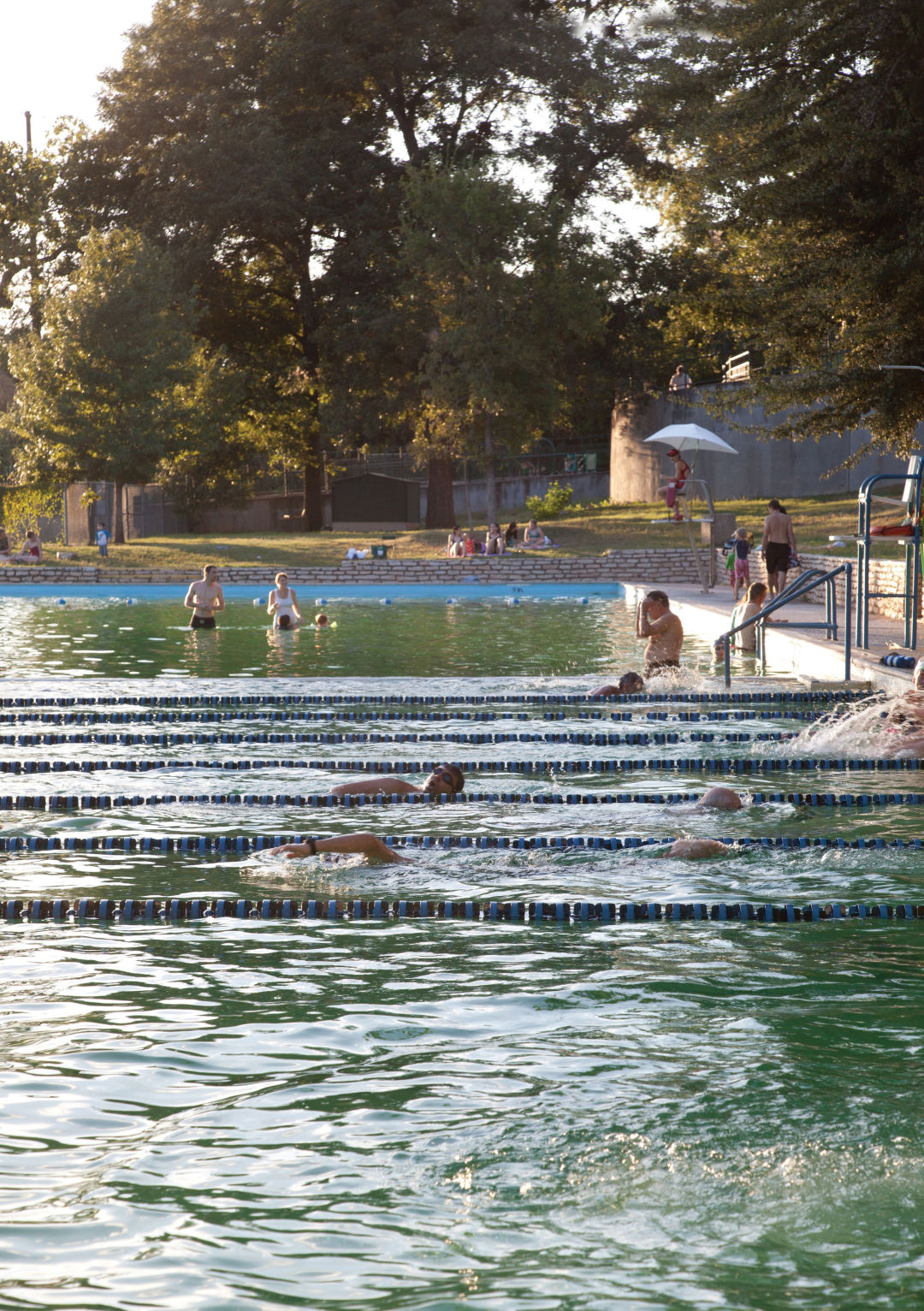
Deep Eddy Pool
Temporarily CLOSED. Austin’s man-made Deep Eddy Pool, located on the Colorado River and spring-fed by the Edwards Aquifer, has been attracting crowds since it was built as a resort in 1915, complete with (long gone) crazy slides, zip line, diving horse, and something called The Human Fish. The city purchased the place in 1935 and opened it to the public the following year. Today “it’s mostly a locals’ place,” says Jodi Jay, the city of Austin’s aquatic director. Families sunbathe on the grass lawn, take in summertime movie nights, and slurp down sno-cones at the concession stand upstairs—no food by the water; thanks, ants—in between dips in the open swim area and lap pool, both of which max at around 75 degrees. This is the oldest public pool in Texas, listed on the National Register of Historic Places. Its bathhouse, dating to the Depression Era, features a gorgeous tile mural, installed in 2012, that tells the story of the pool’s intriguing past.
- Time of year: Year-round
- Reservations: None
- Entrance fee: $2-9; children under 1, free
- Yes: Restrooms, parking
- No: Alcohol, camping, dogs, fishing, boating, kayaking
Stay
The Driskill (from $219/night), a downtown Austin landmark, has its own storied past.
Eat
Steps away from Deep Eddy, Pool Burger serves up wagyu burgers, tiki drinks, kitschy decor, and a chill yard where wet kids are perfectly acceptable.
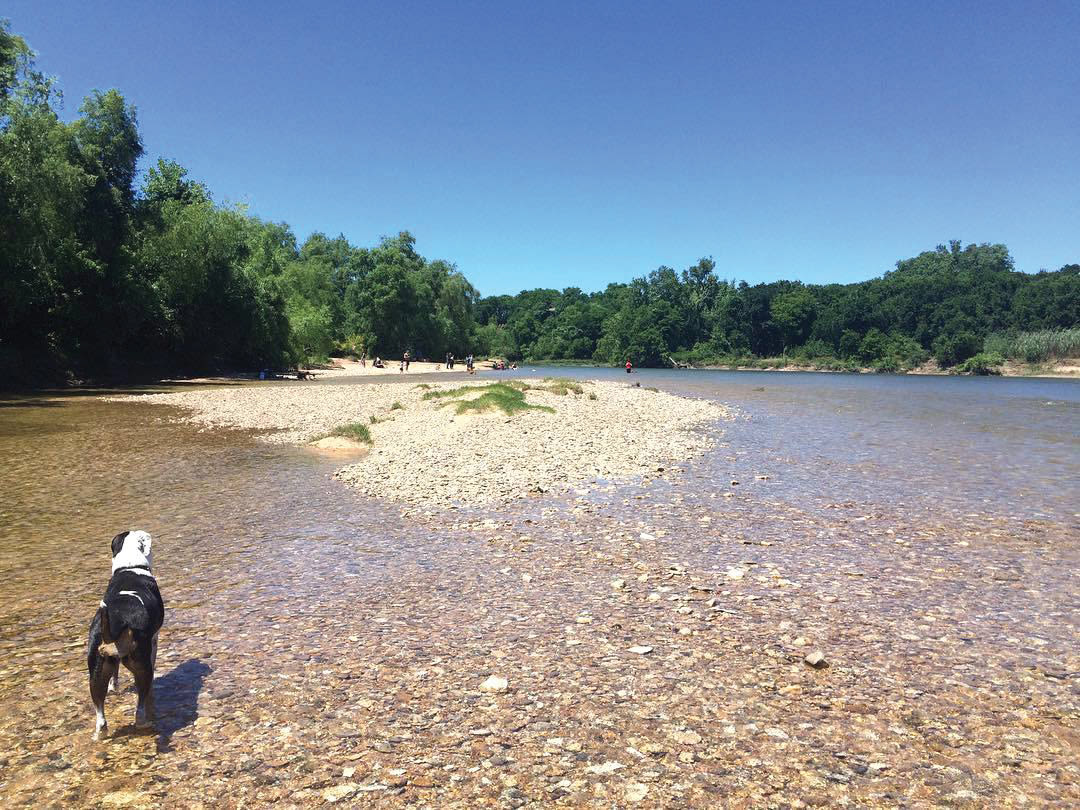
Image: Courtesy fittdotcom
Secret Beach
Okay, fine. Secret Beach in southeast Austin hasn’t been much of a secret since it debuted in the gorgeous, sprawling Roy G. Guerrero Colorado River Park in 2013. Since then the swimming hole has become a popular destination for locals on hot, lazy afternoons—once they know where it is. “You can do it,” Park Ranger LeAnn Ishcomer assures first-timers. “It’s pretty easy. Just make sure you wear the right shoes.” Make the 10-minute hike down dirt trails from the Grove Boulevard ballfields, which includes one final steep descent, and you’ll find a sandy beach surrounded by a peaceful wildlife refuge, perfect for a refreshing swim, assuming the river isn’t over-full. Claims that it’s illegal to swim here aren’t true, says Ishcomer: “It’s allowed when the water levels aren’t rushing through.” Calm days are even kid-friendly.
- Time of year: Year-round
- Reservations: None
- Entrance fee: Free
- Yes: Restrooms, dogs, parking, fishing
- No: Alcohol, boating, kayaking
Stay
Chic indie spot Heywood Hotel (from $189/night) is located just a few blocks from downtown, and five miles from Secret Beach.
Eat
Locals line up out the door for wine and wood-fired pizzas at Austin gem Bufalina.
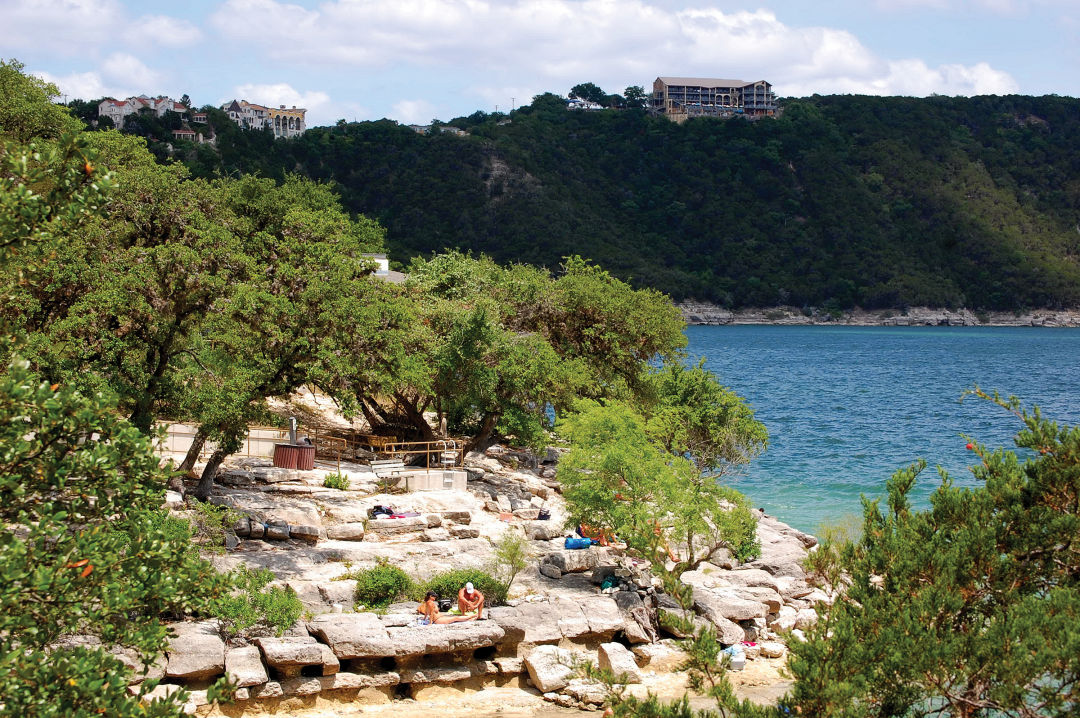
Image: Lone Star Mike/CC
Also try
Temporarily closed. At Hippie Hollow on the shores of Austin’s beautiful Lake Travis, nude sunbathing and swimming are permitted. “There are no barriers, no pretensions,” says Leesa Thomas, who heads membership development for the Hill Country Nudists and makes frequent visits to Hippie Hollow. The swimmers, she adds, are quite welcoming. “If you were to go to a regular swim beach on Lake Travis, people wouldn’t talk to you. After an hour here, you’re gonna know all the people.”
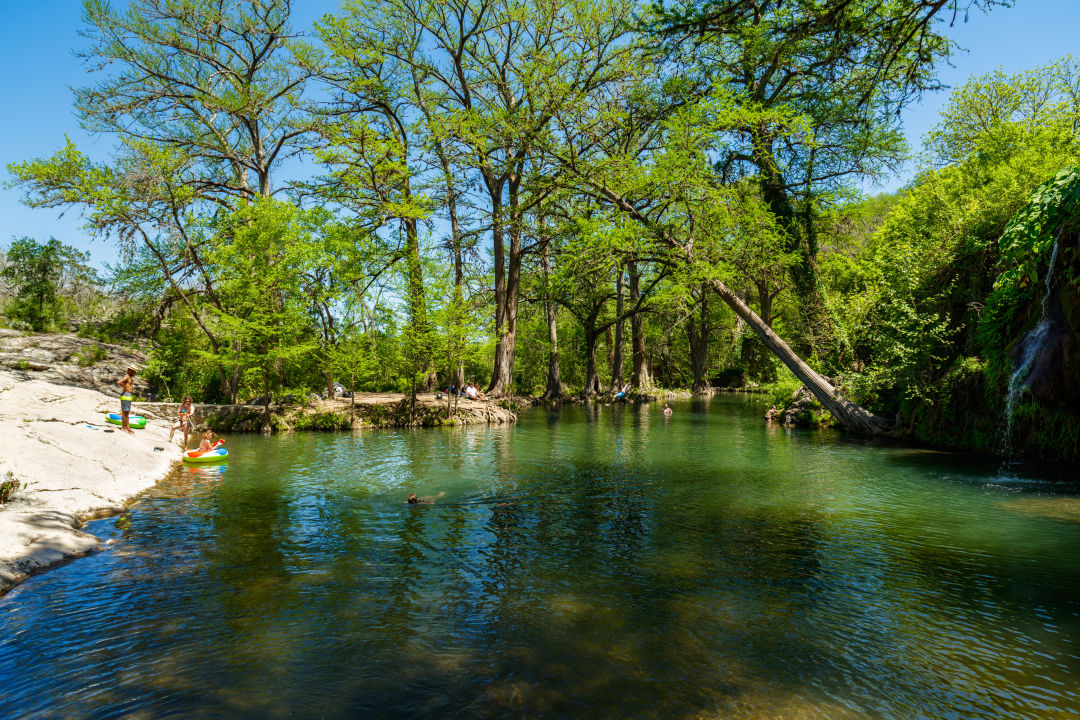
Krause Springs: Four Things to Know
1. The Pronunciation
Presuming you, like us, dropped your German lessons after one look at the extra vowels, know that it’s pronounced Krau-see (two syllables), not Krause (one syllable). For half a century the namesake family has owned the 115-acre property in Spicewood, an hour northwest of Austin; if you find them puttering around the butterfly gardens on your visit, thank them for keeping the grounds so well kept.
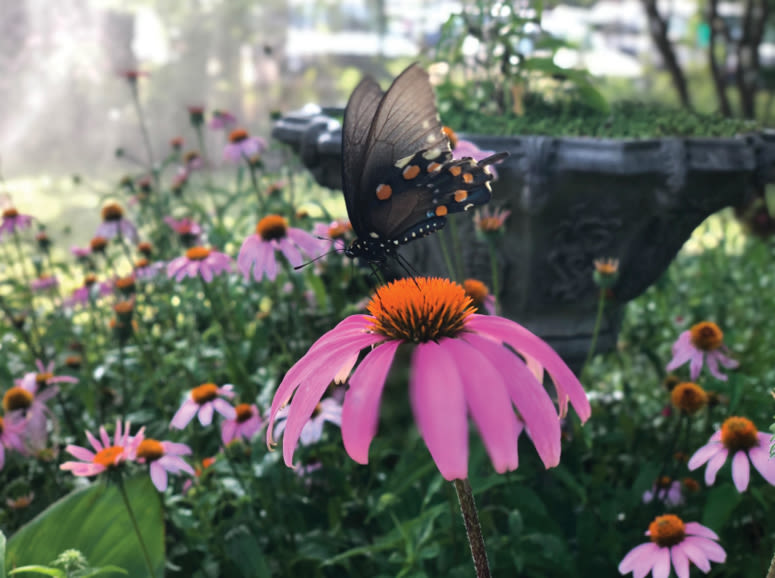
Image: Sean Mack
2. The Butterfly Gardens
Speaking of, do avail yourself of the spectacular butterfly gardens, which, when we visited, were positively erupting with black and tiger swallowtails swooping among the purple coneflowers. Overhead, titanic wind chimes—some at least a dozen feet long—drone in the afternoon breeze. You’ll want to pause at any of the seating along the winding paths. It’s a serene experience you probably didn’t ask for, but definitely won’t regret.
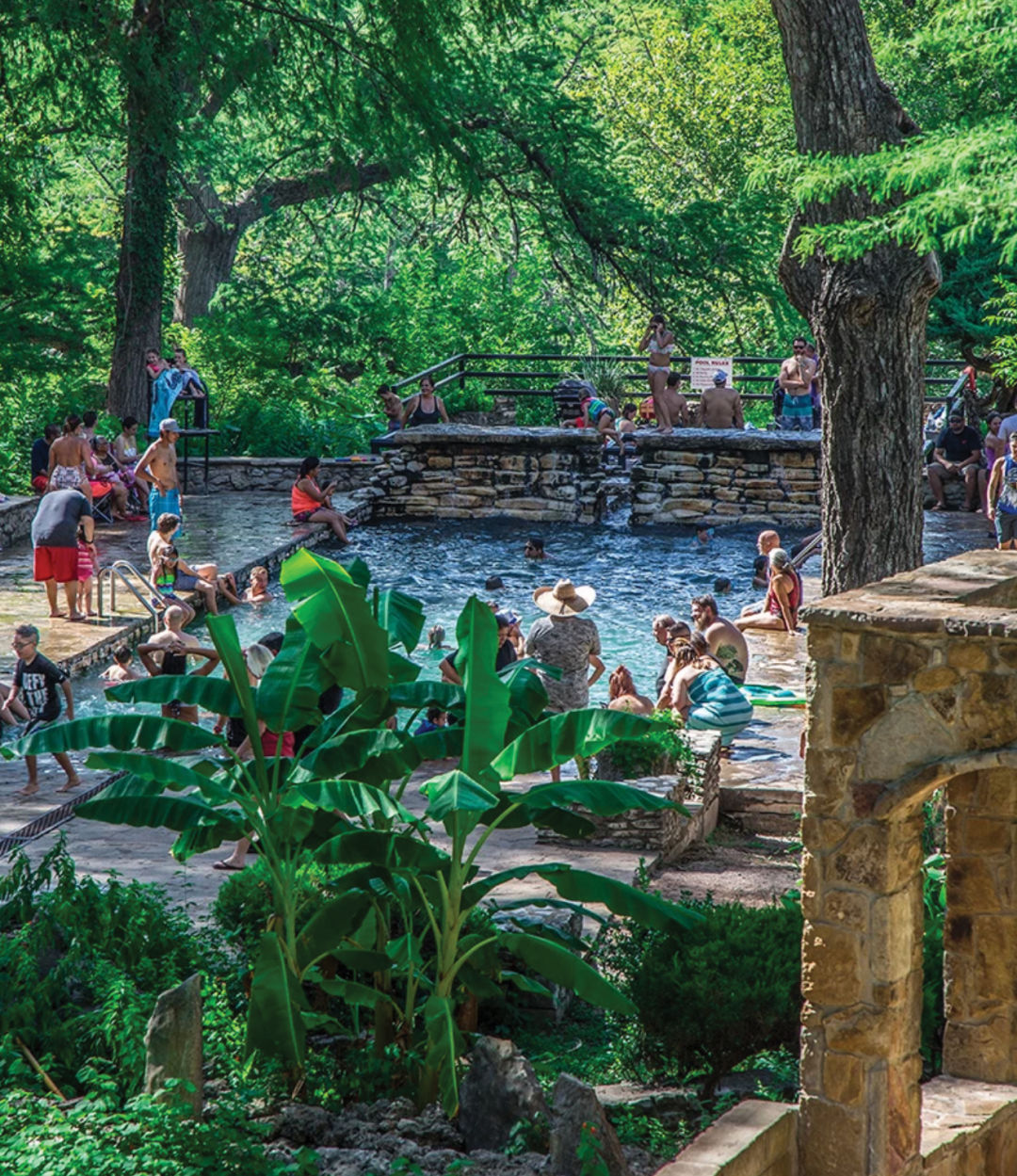
Image: Courtesy LakeTravis.com
3. Swimming, two ways
Once you fork over your eight bucks and listen to an extremely well-rehearsed spiel, you’ll immediately encounter a man-made pool packed with visitors bobbing like cubes in a glass of ice water. The whole area is fed by 32 springs churning out a steady flow of 68-degree water year-round, spilling over the edge of the pool, off a steep cliff, and into a grotto below. A staircase descends toward the swimming hole proper, where the time-honored ritual becomes clear: Bake on the smooth river rocks until well done, chill out in the refreshing waters shaded by towering cypress trees, and repeat all day long.
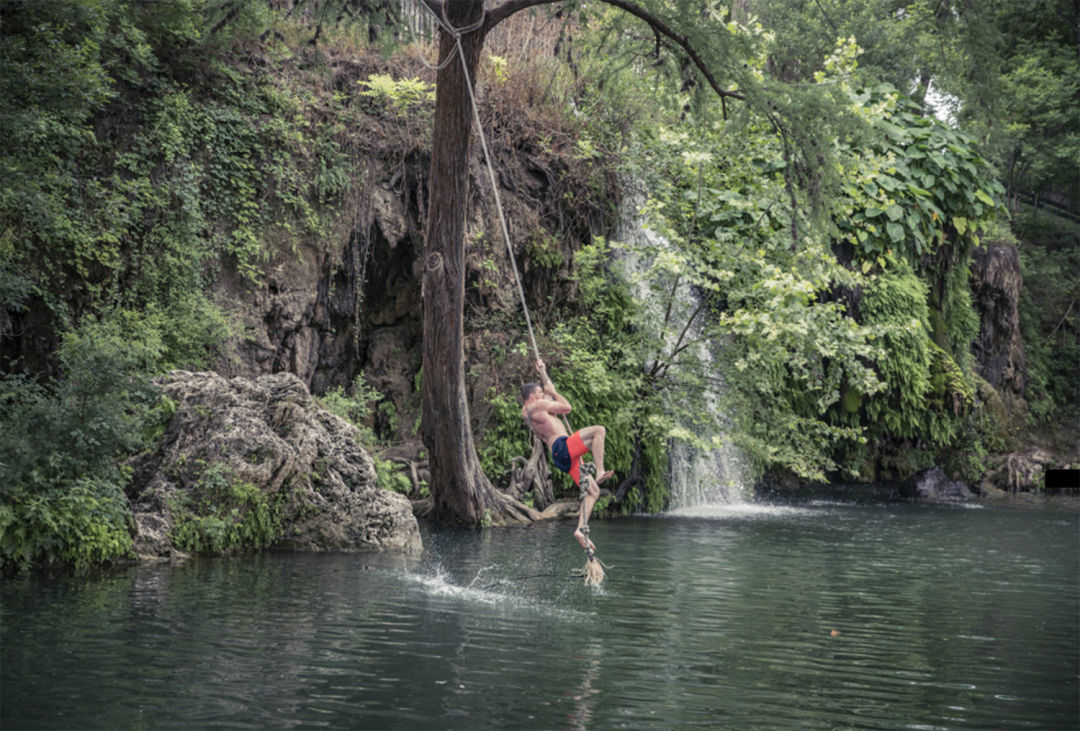
4. Learn the ropes
At the far end of the natural swimming hole, a lone tree juts out of the cliff at a 45-degree angle to the water, thereby creating the perfect conditions for one of nature’s greatest miracles: a tree swing. One after the next, visitors perform their finest George of the Jungle impression as they clutch the triple-knotted rope, swing from a nearby ledge, and hurtle into the watery abyss. It’s by far the most popular attraction, with an omnipresent line.
Stay
Most overnighters camp on-site, but it’s worth backtracking toward Dripping Springs’ Bella Nido Bed and Breakfast (from $125/night), where Hill Country–chic rooms overlook a field scattered with grazing longhorn cattle.
Eat
The no-frills metal shed occupied by Opie’s Barbecue is a necessary coda to any visit. Twelve-foot mesquite smokers churn out superlative brisket, and the juicy pork chops are massive enough to give Perry’s a run for its money.
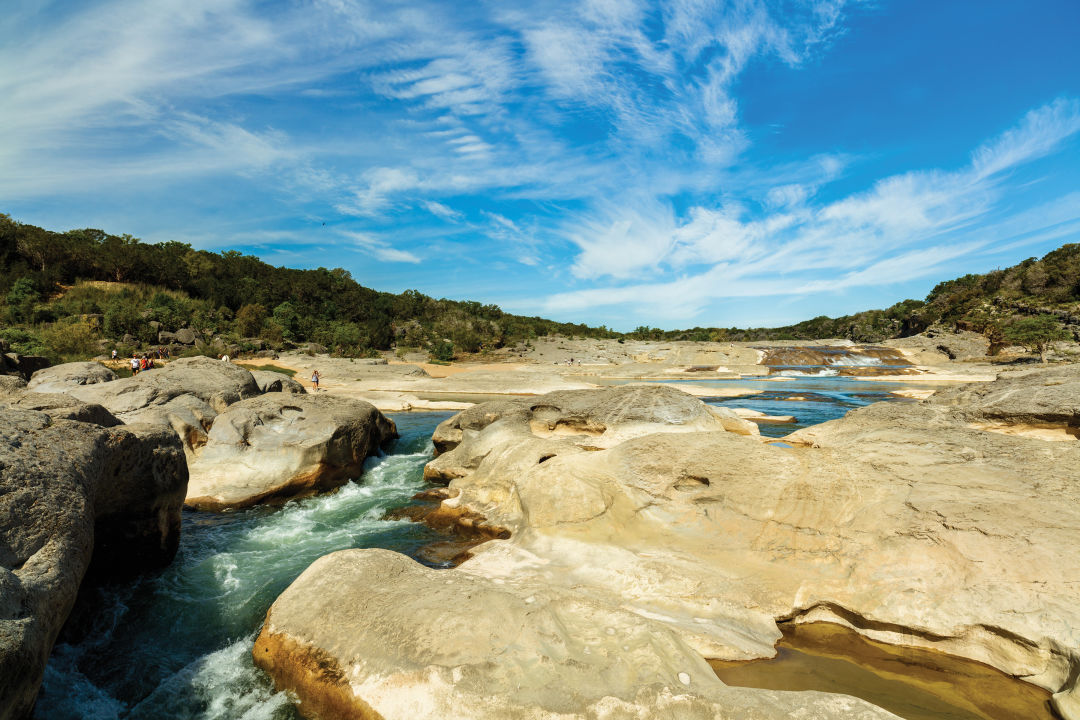
Pedernales Falls
reservations encouraged; closed to day-use only visitors on Monday and Tuesday. Traversed throughout history by Lipan Apaches, Spanish explorers, farmers, and ranchers, Pedernales Falls State Park opened to the public in 1971, the year after the state acquired its 5,000-plus acres. Today the park is renowned for its majestic waterfalls and 40 miles of scenic trails. “We’re a large piece of land that offers quite a bit for an outdoor enthusiast,” says assistant park superintendent Jason Hairston. “Most anything people would want to do outside, we have.” That includes swimming, of course, in designated areas of the Pedernales River and several springs around the property—the falls themselves are the biggest tourist draw, but off-limits for wading. There’s lots more to see, from canyons and creeks to stair-stepped pools and plenty of scenic overlooks for beholding those falls.
- Time of year: Year-round
- Reservations: Recommended
- Entrance fee: $6; children under 12, free
- Yes: Restrooms, camping, dogs (but not overnight in the primitive campsites), parking, fishing, boating (not much), kayaking
- No: Alcohol
Stay
Do some glamping in Johnson City, in a 500-square-foot, air-conditioned luxury tent overlooking the Pedernales at Walden Retreats (from $350/night). Or, for more traditional accommodations, Canyon Road Olive Ranch (from $150/night) offers charming cottages nestled among 25 acres of olive trees, grape vines, and fruit orchards.
Eat
Try Johnson City’s Farmhouse Vineyards (temporarily closed) wine in a ’70s Airstream at the Tipsy Tasting Trailer, or a Pedernales Chili Cheeseburger at East Main Grill in Johnson City’s Old Lumber Yard complex.
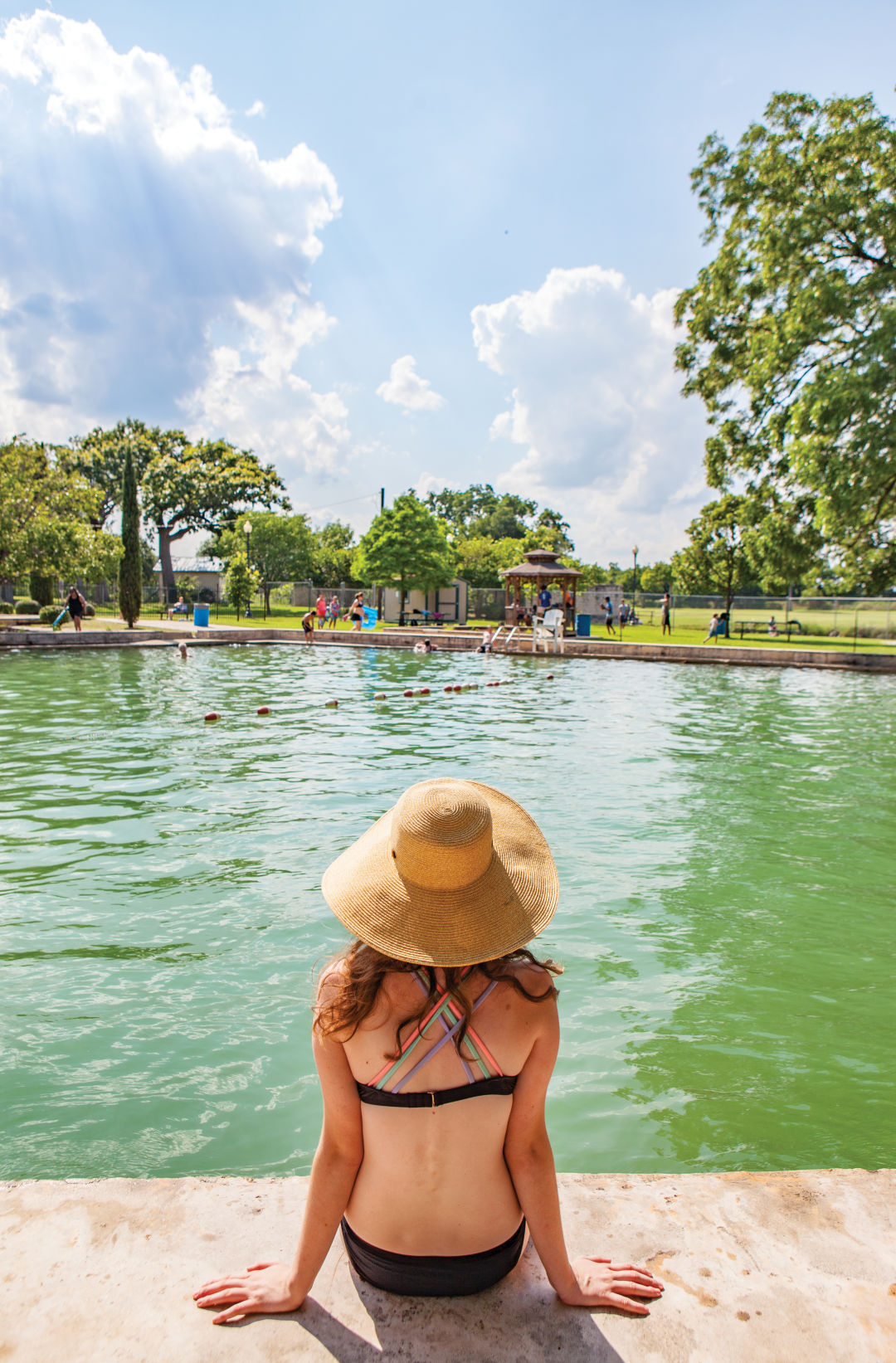
Image: © Kenny Braun
Hancock Pool
Operating at 75-Percent Capacity. There’s an important thing to know about this picturesque, free-flowing pool: It smells like sulfur. In fact, Chris Eicher, the town’s parks and recreation director, goes a little further. “It smells like rotten eggs,” he laughs. “We locals enjoy it. It’s home to us. Others find it a little pungent.” But Lampasans aren’t the only ones who find the spring-fed pool—built more than a century ago at Hancock Springs, it feeds into Sulphur Creek and, ultimately, the Lampasas River—refreshing, and some say the water, always a cool 68 to 72 degrees, has medicinal properties. “It depends on who you talk to,” says Eicher. “Some people believe it can heal anything.” Visitors even take bottles of the stuff home with them. What does Eicher himself, a native of the town, think? “I do believe it is healing water,” he says. He would know.
- Time of year: Thursday-Sunday, Memorial Day to Labor Day
- Reservations: None
- Entrance fee: $2.50-3.50
- Yes: Restrooms, dogs, parking, fishing (in Sulphur Creek)
- No: Camping, alcohol, boating, kayaking
Stay
Markward Manor (from $110/night) is a historic Lampasas B&B—a Victorian home dating to the 1870s—offering guests double rooms or suites, a lovely garden, and full English breakfasts.
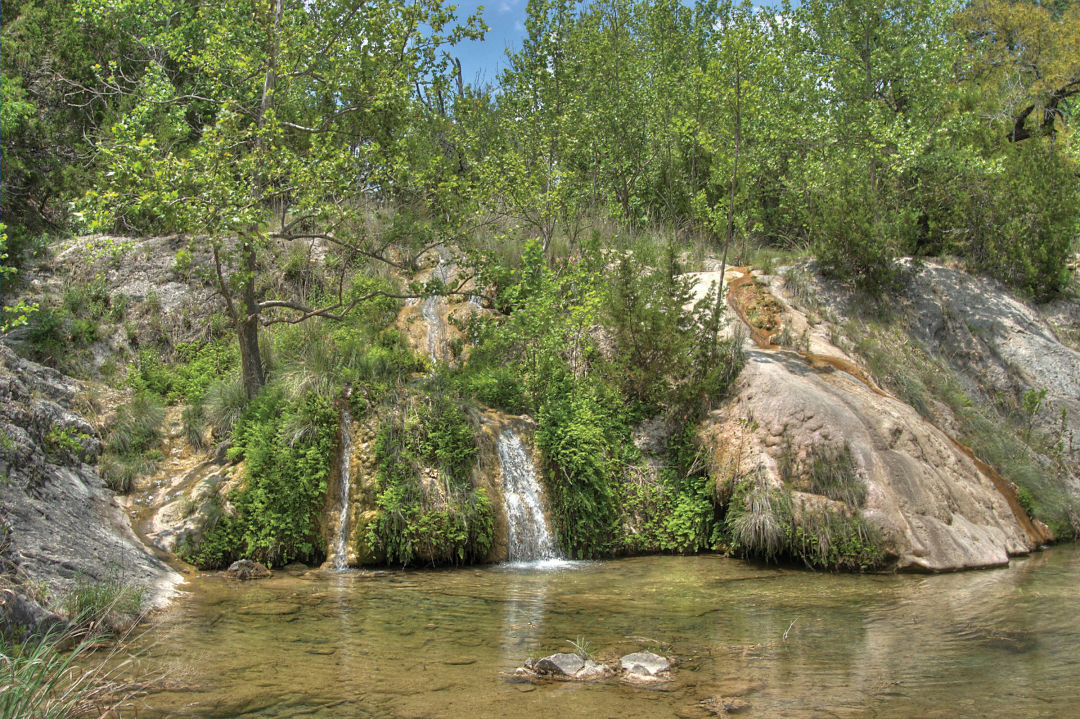
Image: asergeev.com
Spicewood Springs
RESERVATIONs ENCOURAGED. The 5,328-acre Colorado Bend State Park on the Colorado River features a huge variety of landscapes: flatlands and hills, cliffs and canyons, more than 200 caves, the 70-foot spring-fed waterfall known as Gorman Falls, and fields upon fields of flowers and cacti. “You can find something new every time you come out here. It’s just a wonder,” Amanda Parsons, the park’s superintendent, says. “There are so many hidden little gems.” That includes the six swimming holes that make up Spicewood Springs, which are fed by the creek of the same name and stay a nice 72 to 76 degrees year-round. The largest and most popular pool is an easy half-mile hike from the day-use area at the park’s river campsite. At nine feet deep, it’s not for poor swimmers or young children, but the five other swimming holes are shallow and great for wading.
- Time of year: Year-round
- Reservations: Recommended
- Entrance fee: $5; children under 12, free
- Yes: Restrooms, camping, dogs (but not in the swimming holes), parking, fishing, boating, kayaking
- No: Alcohol
Stay
The Dofflemyer Hotel (from $139/night) in San Saba, a short drive west of Bend, is a bank turned hipster haven, with a chic mix of industrial and farmhouse decor.
Eat
Lometa’s Fiesta Winery and Vineyard (currently take-out only, mask required) offers pizzas, cheese plates, and Texas wines. Pro tip: Bend doesn’t have any gas stations, so plan to get gas in Lometa before driving to the park.
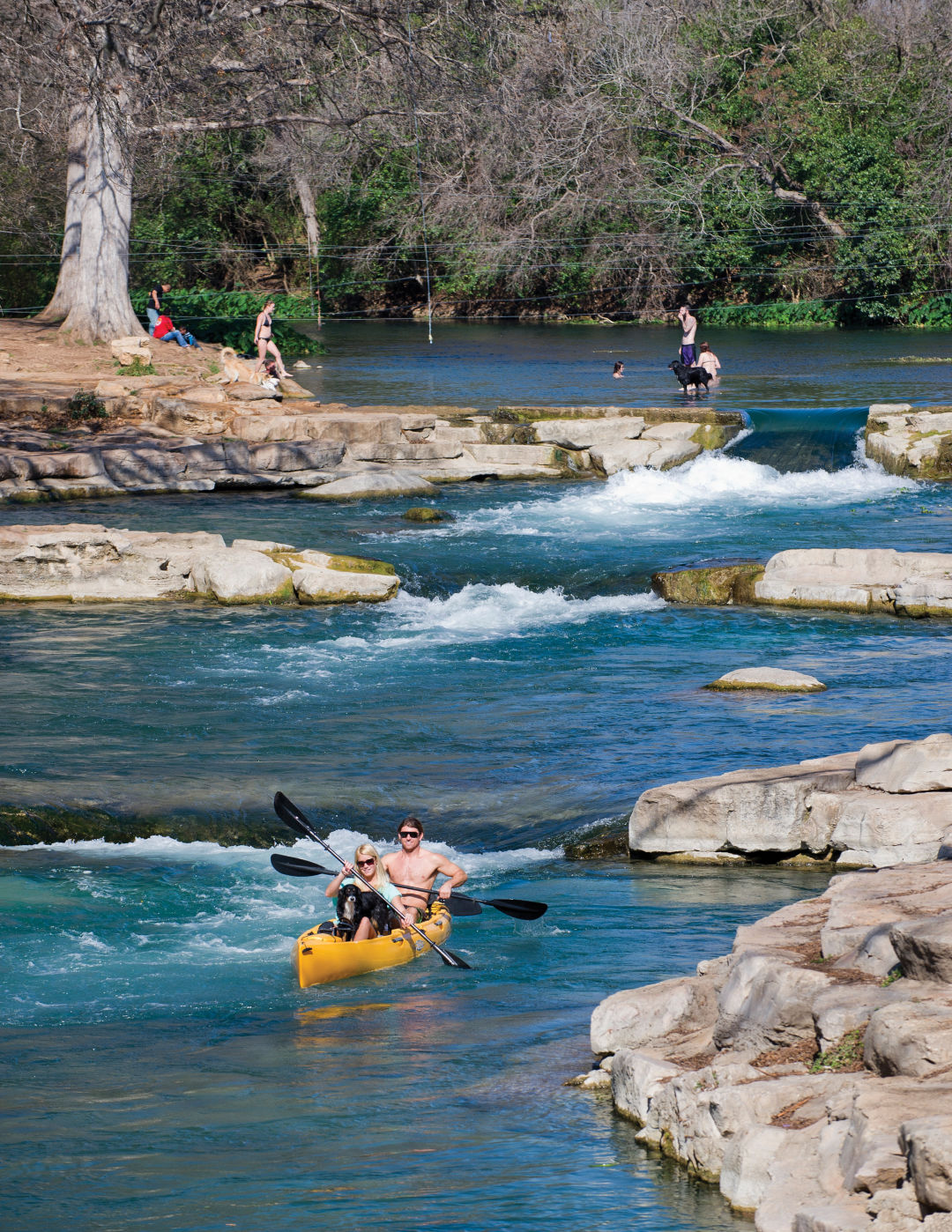
Image: Courtesy San Marcos CVB
Rio Vista Park
Temporarily Closed. Rio Vista Park is not only a great spot for a dip into the San Marcos River’s spring-fed, crystal-clear, 72-degree waters; it’s also located just blocks from downtown San Marcos. A converted dam and five mini waterfalls make for popular play areas, while more adventurous folk shoot the rapids on a tube or simply drop in for a leisurely drift downstream. “It’s only about a 40-minute float, so it’s great for families with smaller children,” says Charlotte Wattigny, with the San Marcos CVB. “You can float down, take the shuttle back, and do it again.” Of course, you won’t be the only one—far from it. “In the heat of the summer, by noon it’s pretty packed,” Wattigny warns. Early birds can avoid tube traffic jams; kayakers prefer mornings, too, when the river “is a little bit whitewater-ish,” Wattigny says. Another way to avoid summertime congestion? Try doing some good, old-fashioned exploring of the park’s various trails and river-access points. “You don’t have to go where everybody is.”
- Time of year: Year-round
- Reservations: None
- Entrance fee: None
- Yes: Restrooms, dogs, parking, kayaking, alcohol (not in the park, but you can take it with you to float the river)
- No: Camping, fishing (not much), boating
Stay
San Marcos is full of quaint, historic B&Bs like the circa-1883 Crystal River Inn (from $115/night).
Eat
Just around the corner from the park, Herbert’s Taco Hut (512-392-2993) has doled out reliable, affordable Tex-Mex for more than 35 years, while Hays Co. Bar-B-Que serves up hulking pork chops and smoky 20-hour-smoked brisket.
Also try
City Park and San Marcos Plaza Park Temporarily Closed. San Marcos parks, all free and connected by trails along the river, each have their own draws. The 18-acre City Park is a popular spot for tube drop-ins. Plaza Park hosts festivals and outdoor concerts on the riverbank. And the recently renovated Children’s Park features an inclusive playscape with accessible swings, slides, and river activities.
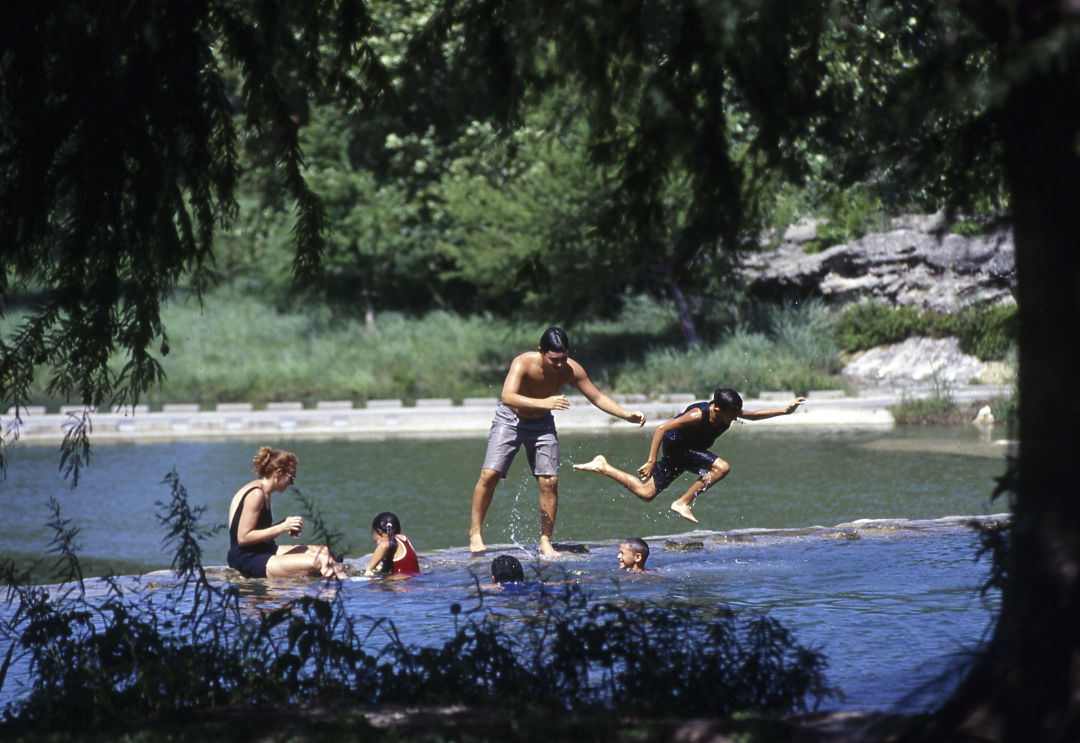
Image: Chase Fountain/TPWL
Falls Dam
reservations encouraged. The main draw at Blanco State Park in Blanco, an hour north of San Antonio, is the Blanco River’s Falls Dam, a waterfall-like feature that feeds into a raised wading pool for children whose natural spring waters are always 68 degrees. The laid-back, family-friendly attraction gets packed during the summer. “It’s a small park,” explains park employee Buffie Marquez. “What you’ll want to do is just kick back and relax.”
- Time of year: Year-round
- Reservations: Yes
- Entrance fee: $5; children under 12, free
- Yes: Restrooms, camping, dogs, parking, fishing, boating, kayaking
- No: Alcohol
Stay
The charming, historic Blanco County Inn & Guesthouses (from $50/night) lies just a few blocks from the river.
Eat
Also Old 300 BBQ offers by-the-pound smoked meats and frequent brisket taco specials.
Also try
Public Access to Comal temporarily Closed in New Braunfels. The crystal-clear Comal River runs straight through New Braunfels, and each year crowds descend to multiple attractions here for family-friendly fun—especially, of course, tubing.
Landa Park Aquatic Complex operating at 50-percent capacity; wading pool and paddle boats closed. Landa Park offers a riverside spring-fed pool with a two-story slide, plus a children’s wading pool, surrounded by towering oaks.
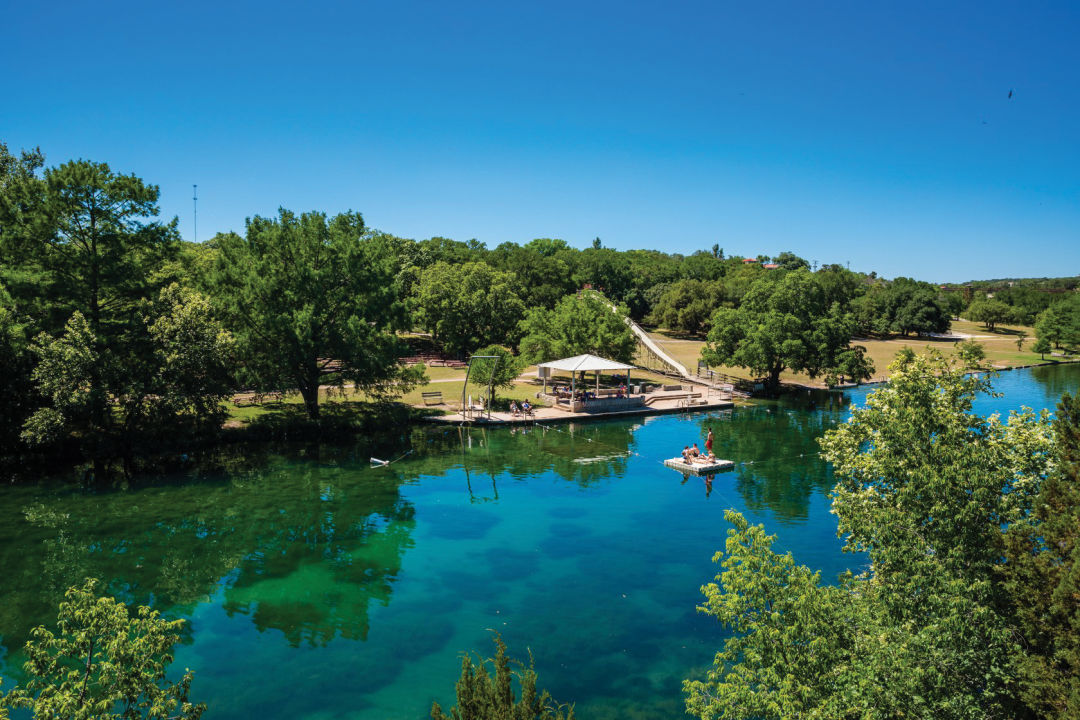
Image: Courtesy of Mo-Ranch
Mo-Ranch
Masks Required. You could say we are, in fact, deep in the heart of Texas, approaching Hunt, about 12 miles west of Kerrville. Our car is the only one on these narrow, winding roads that follow the curves of the Guadalupe River. The official mission of Presbyterian Mo-Ranch Assembly, its brochure states, is “to foster growth in God through Jesus Christ,” but the 500-acre riverfront retreat welcomes people of all faiths—more than 30,000 of them each year, in fact.
Owned and operated by the Presbyterian Church, Mo-Ranch is named for its original owner, Dan Moran, a Houston oilman who built most of the structures here with Hill Country limestone, wrought iron, and oil pipe in the ’30s and ’40s. When Moran died, in 1948, his widow sold the ranch to the church. Today the place hosts a slew of summer camps, conferences, and family reunions. With plentiful, albeit basic, accommodations—hotel rooms, riverside dorms, cabins, and guesthouses—the ranch also attracts city folk like us, searching for peace in its crystal-clear waters and wide-open spaces.
You’ll find no TVs, phones, or cell service here. This is a place made for pondering man’s purpose, not posting to Instagram. Guests take their meals buffet-style in the cavernous, rustic King Dining Hall, where kids in matching sweatshirts and wet French braids scurry to the cooler in a mad dash for ice cream. “Megan, this is a dining hall; sit your butt down and don’t say another word,” one woman calls out. “Do I look like I’m kidding?”
It’s quieter outside, where sunlight seeps through a thick canopy of trees. The grounds are lush and expansive, with miles of scenic trails named for wildlife you might see on a hike—roadrunner, heron, hawk, warbler—and every imaginable type of court and field, a ropes course and zip line, pecan groves, playgrounds, meadows, a greenhouse, and a deep-blue swimming pool with more than two million hand-set San Jose tiles that took hundreds of workers to assemble back in 1936.
More than anything, though, it’s the Guadalupe River that brings people here. It is smooth, cold, and clear enough to see straight through to your pedicure. There are stacks of canoes, a rope swing, and shallow, rushing rapids to shoot through, and the famous, 38-foot Mo-Slide—not for the faint of heart.
On our visit we managed to find our own private spot on the Guadalupe’s banks, where we marveled at its might. Sure, there’s a quaint little chapel on a hill up ahead, but, for our money, it’s here, on the placid water, where the real magic happens—whatever you believe, whomever you pray to.
- Time of year: Year-round
- Reservations: Yes
- Entrance fee: Day passes, $10; hotel rooms start at $119/night
- Yes: Restrooms, camping, alcohol (in private quarters), parking, fishing, kayaking
- No: Dogs, boating

Image: Chris Zebo/Visit Texas
San Solomon Springs
Temporarily closed. At 25 feet deep, 1.3 acres wide, and holding 3.5 million gallons of water, the spring-fed swimming pool at Balmorhea State Park in Toyahvale, West Texas, is the largest attraction of its kind in the world. Fed by San Solomon Springs and built in the 1930s, it reopened in March after almost a year of renovations, to the tune of $2 million, to repair years of wear and tear. Because the structure is historic, no heavy machinery was used during demolition or construction, explains Stephanie Salinas Garcia, a press officer with the Texas Parks & Wildlife Department. Instead each brick and piece of concrete had to be removed and replaced by hand. “It was a very extensive project,” Garcia says. And since the pool contains endangered fish, the state park had to take extra care to build cofferdams to protect those species and maintain the water flow throughout construction. Today visitors can once again jump off the diving board and into its crystal-clear waters without fear of doing damage. “We were very excited,” Garcia says, “that we were able to have it open in time for swimming season.”
- Time of year: Year-round
- Reservations: Yes
- Entrance fee: $7; children under 12, free
- Yes: Restrooms, camping (double-check that the area is ready), dogs
- No: Alcohol, parking, fishing, boating, kayaking
Stay
Balmorhea State Park and San Solomon Springs Court are Closed, but planning to open fall 2020. Balmorhea State Park offers on-site motel-style lodging at San Solomon Springs Court; double-check that renovations are complete.
Eat
There’s something for everyone at Balmorhea standby Jo’s Bar & Grill (432-375-0390): tacos, barbecue, burgers, and pub grub galore.
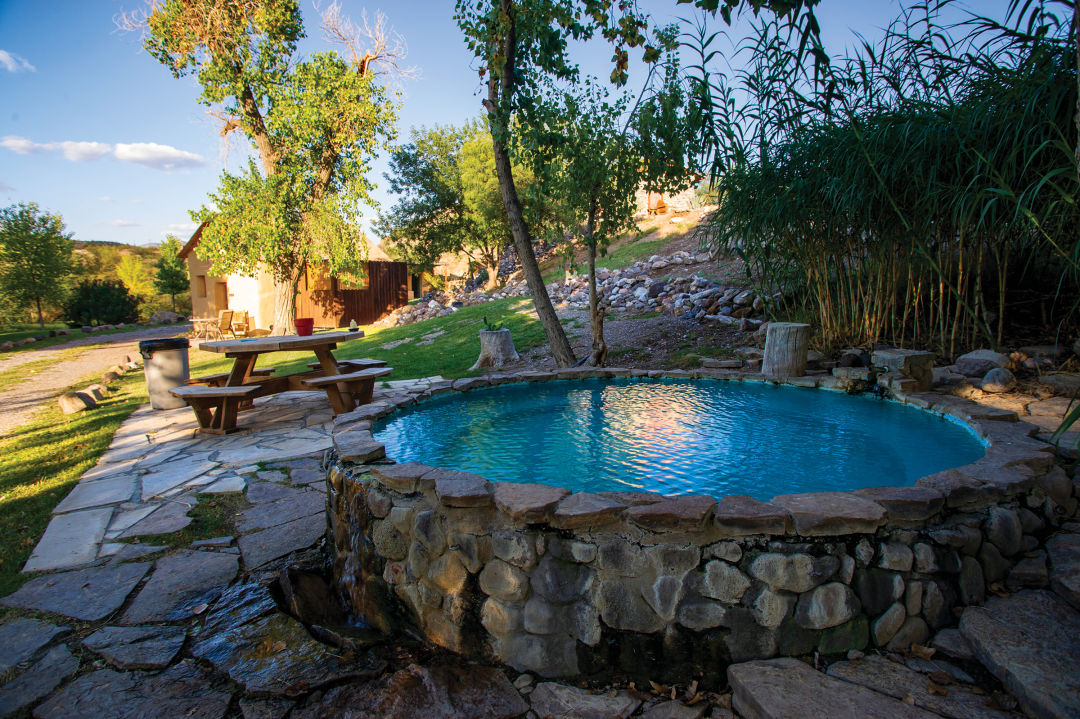
Image: Chase Fountain/TPWD
Bonus Pick: Chinati Hot Springs
Nestled in the valley of Pinto Canyon on the edge of the Chihuahuan Desert outside Presidio in West Texas, Chinati Hot Springs is a 640-acre resort that’s changed hands many times—at one point famed Marfa artist Donald Judd owned the place and kept it closed to the public entirely. In 2005 a retired CEO purchased the property and started restoring it. Today campers and visitors staying in the remote resort’s cabins get the chance to soak in the tubs, filled daily with 109-degree water straight from the hot springs themselves; cool desert evenings make the place an attraction year-round. The mineral waters are reputed to have healing powers, and while it’s hard to say whether this is true, between the sheer sensation of slipping into the water itself, and the joy of taking in the area’s rugged, isolated beauty, it’s hard to imagine that any troubles you bring with you won’t be washed away by the time you leave.
- Time of year: Year-round
- Reservations: Required
- Entrance fee: $25-120 per night for camping or cabins; no day passes
- Yes: Restrooms, camping, alcohol, dogs, parking
- No: Fishing, boating, kayaking
Eat
Visitors bring their own supplies and cook in the community kitchen. There’s a well-equipped general store with an excellent wine selection in the Hot Springs Airport, just 20 minutes away in Ruidosa.









